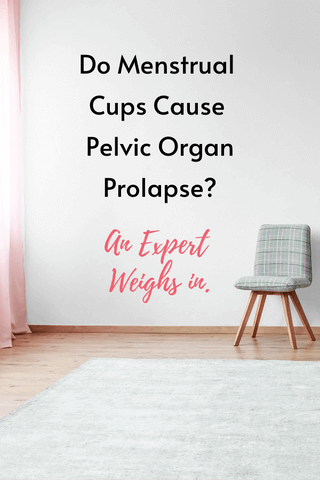Earlier this year, a news article by the UK's BBC caused a rumble to go through the menstrual health industry, as it was reported that menstrual cups could cause pelvic organ prolapse. In the article, two women who had been diagnosed with the condition attributed it to their use of menstrual cups. While no detailed scientific studies prove that there is a link between prolapse and use of a menstrual cup, we wanted to talk to an expert about whether or not we have anything to worry about.
According to Dr Emmary Butler MD, a board-certified gynecologist with Indiana's Women's Health Advantage, current “Ob/Gyn literature does not recognize a link between pelvic organ prolapse and menstrual cup use.” So far, so reassuring. But we felt there were a few more things we needed to clear up. Such as...
What is pelvic organ prolapse?
Pelvic organ prolapse, or POP, is “a benign condition where one or more aspects of the uterus and/or vagina herniate into the vaginal canal,” says Dr Butler. In other words, parts of your body that should be in one place – say, the neck of your cervix, which ordinarily lives at the end of your vaginal canal, can migrate downwards.
Are there different types of prolapse?
Not all prolapse is created equally – and there is more than one type worth being aware of. “There are several categories,” Dr Butler acknowledges. “Uterine prolapse is the descent of the uterus and cervix into the vaginal canal. For women who are post-hysterectomy, for example, the apex of the vaginal cuff herniates into the vaginal canal.” Then there's something called a cystocele, or herniated bladder, which involves “the herniation of the anterior vaginal wall . . . [which] can be associated with the descent of the bladder.” Rectocele is another – the herniation of the posterior vaginal wall, “associated with the descent of the rectum,” says Dr Butler. Then there's enterocele, “the herniation of the intestines through the vaginal wall.” Not to mention “uterine procidentia, the herniation of the prior mentioned compartments through the vaginal opening known as the introitus.”
So far, so terrifying. How worried should we be?
Here's the bad-but-also-good news: according to the American College of Obstetrics and Gynecology, pelvic organ prolapse will be experienced by between 41 and 50 per cent of people with a vagina. But, says Dr Butler, “only 3% of women in the US experience symptoms [such as] vaginal bulge” or difficulties urinating or defecating.
What are the most common causes of prolapse?
There are a variety of risk factors for pelvic organ prolapse, says Dr Butler, including an increasing number of pregnancies, vaginal delivery, advancing age, obesity, connective tissue disorders, menopausal status, chronic constipation and heavy lifting. Family history may also play a part, and race is a factor, too; white people are at an increased risk of pelvic organ prolapse. Menstrual cups, however? “I haven't noticed a link between pelvic organ prolapse and the use of menstrual cups in my practice,” Dr Butler confirms, adding that medical literature “doesn't recognize a link . . . at this time.”
Can pelvic organ prolapse be treated?
Bearing in mind the fact that only 3% of people experiencing pelvic organ prolapse will have any symptoms, there are both conservative and surgical treatment methods available. Firstly, Dr Butler recommends that for those who prefer to avoid treatment, or who are asymptomatic – the majority of those with pelvic organ prolapse, then – it's about monitoring symptoms. “These women should be aware of urinary and bowel symptoms, and evaluated if symptoms arise or worsen.” Conservative treatments include pelvic floor therapy, increasing fiber intake (in order to reduce the need to bear down while using the restroom), vaginal pessaries which can “provide support of the pelvic organs” and topical estrogen, “which can . . . decrease vaginal irritation.” For those going down the surgical route, “these procedures include suspension for pelvic organs and correction of vaginal compartment herniations.”
You know what they say about prevention vs cure . . .
Of course, we'd all rather avoid having to experience pelvic organ prolapse if at all possible. Dr Butler recommends minimizing risk factors: “Avoid constipation; weight management; pelvic floor strengthening with therapy or kegels.” And, if you have already experienced prolapse, you can prevent the progression “by avoiding heavy lifting”. What she didn't mention? Menstrual cup use.
The best advice of all is to keep up your kegels (we're doing ours right now) and make sure you're inserting and removing your menstrual cup carefully, without bearing down too much on your pelvic floor (a deep squat can help). If, of course, you're worried – see your GP sooner, rather than later.





